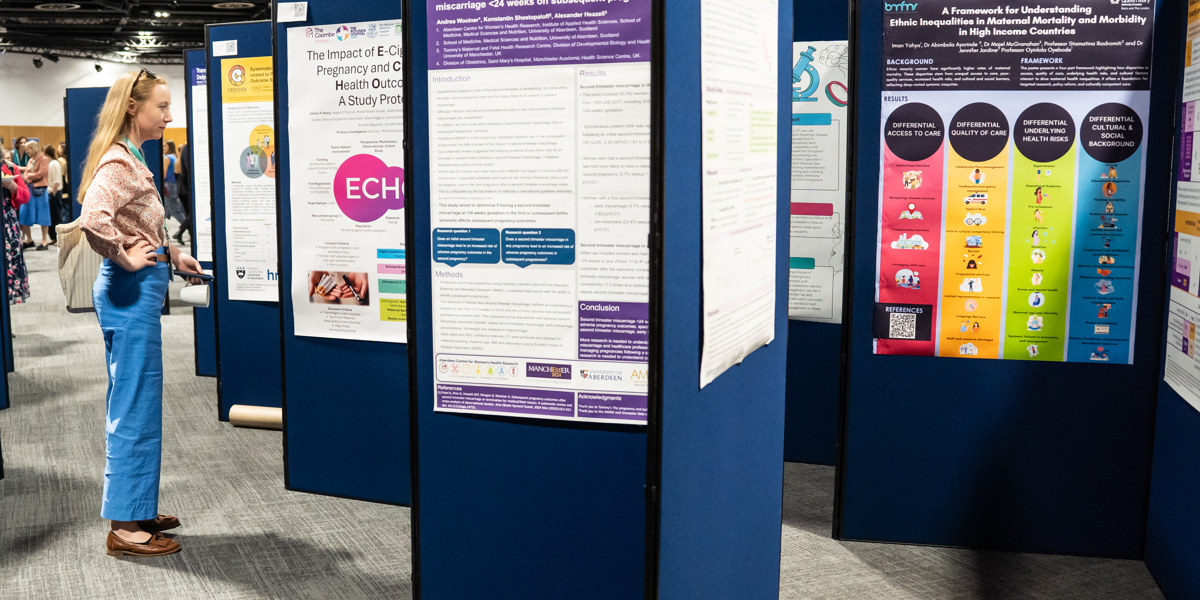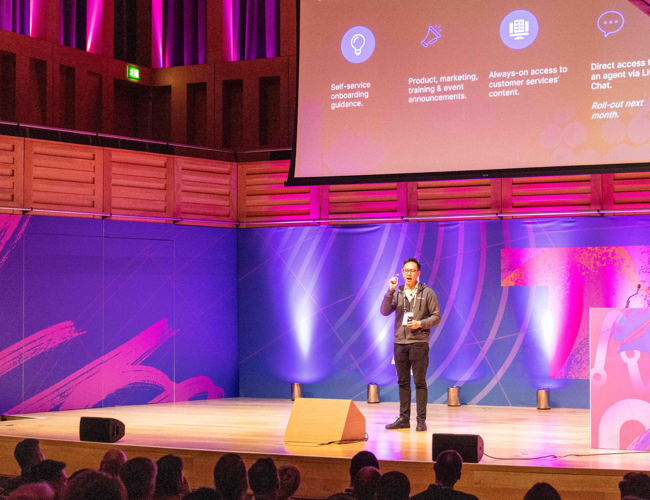A comprehensive guide to abstract management for conferences

Navigating the abstract submissions process can be complex. Ensuring quality and relevance requires submissions to undergo a rigorous review process and strict adherence to deadlines. The entire process can be complicated and time-consuming. This guide aims to provide you with a comprehensive understanding of the call for papers and abstract management process, its essential features and how effective abstract management improves event outcomes
1. Understanding abstracts - What are abstracts and why are they important?
An abstract is a short summary of a longer piece of work, such as a thesis, talk, poster or research paper. Typically, abstracts are 100-300 words and follow the IMRaD structure: Introduction, Methods, Results, and Discussion. Abstracts are crucial for academics; it gives them the opportunity to apply for the chance to present their work and are used to promote events and inform delegates about which events to attend.
Abstracts can be submitted for a variety of presentation formats at conferences, each serving a different purpose. These include oral presentations for in-depth talks, poster presentations for visual summaries of research (especially in scientific and medical fields), and panel discussions that bring together multiple speakers around a shared theme. Abstracts may also propose workshops or interactive sessions focused on skill-building or collaboration, lightning talks for quick, impactful ideas, and even creative formats like performances or storytelling. Each type allows participants to engage with the audience in unique and meaningful ways.
2. Types of abstracts – How many are there?
Abstracts can vary depending on the type of presentation:
Talks: Short descriptions of oral presentations, including the speaker, affiliation, title and topic.
Sessions: Descriptions of sessions, symposia or workshops, including the chair, speakers, affiliations, titles, and topics.
Posters: Descriptions of poster presentations, including the primary author, other authors, affiliations, title and typically following the IMRaD structure.
3. The submission process – what are the steps
Step one - Submission
1. Call for abstracts/papers: This is a public announcement or invitation from a conference, journal, or event asking for submissions on specific topics or themes. The Program Organising Committee (POC) announces the call for abstracts, outlining submission guidelines. These include eligibility, word limits, format, important dates and required information about authors and abstracts.
2. Submission system: An online platform will be used to ensure there is a central place to submit the abstracts. To ensure a smooth submission process it’s recommended that the system is user-friendly, well-tested and clearly communicates deadlines.
3. Collation of abstracts: Once the submissions window closes the abstracts are collated for review.
Step two – Review and selection
1. Review committee: Once the preliminary checks are completed for compliance with guidelines the POC sends abstracts to reviewers, who are experts in the field, for evaluation.
2. Review criteria: Reviewers assess abstracts based on quality, relevance and suitability, often using a mix of yes/no, scoring and free text.
The review process ensures that only high-quality abstracts are selected for presentation at the conference.
Step three – Decision
1. Decisions: The POC considers the reviews to decide whether to accept, reject, or request changes to abstracts.
2. Notification of decision: Once the final decision is made notification of acceptance, revision or rejection are sent out to those who submitted the abstracts. They are provided with guidelines for preparing their presentations. This step is essential for ensuring that authors have ample time to prepare and deliver high-quality presentations.
3. Scheduling: Accepted abstracts are scheduled into the conference program via a session, talk, poster or a combination. This involves organising sessions, assigning time slots and ensuring a balanced and engaging schedule. Effective scheduling enhances the attendee experience and maximises the impact of the conference.
Step four – Presentation
1. Preparation of presentation materials: This involves gathering all accepted abstracts, ensuring they are formatted correctly and creating any necessary visual aids or slides that summarise the key points of each abstract.
2. The presentation: This is the actual delivery of the presentation, where the key points of the abstracts are communicated to the audience. This includes discussing the significance of the research, the methodology used and the results obtained.
3. Feedback: Feedback is collated from the audience after the presentation has been completed. This can be done through surveys, direct comments or discussion sessions.
4. Abstract books: Accepted abstracts are sometimes compiled into an abstract book, which is usually digital. This book serves as a permanent record of the research presented and is used by attendees to navigate the conference program and poster sessions. It provides a comprehensive overview of the research topics covered and helps attendees plan which sessions to attend.
4. Poster sessions and what is a poster?
This is the part of the conference/event where researchers present their work in the form of posters. A poster is a visual representation of research that typically includes:
Title: The title of the research project.
Authors: Names of the researchers involved.
Introduction: Background information and the purpose of the study.
Methods: A brief description of the research methodology.
Results: Key findings presented with charts, graphs or images.
Conclusion: Summary of the findings and their implications.
References: Citations of sources used in the research.
Posters are displayed on boards (digital and physical) and researchers stand by their posters to discuss their work with attendees, answer questions and receive feedback. This format allows for interactive and detailed discussions about the research.
5. Online abstract management systems/platforms – How to choose the right one?
An abstract management platform is a piece of specialised software that helps to streamline the call for papers for presentation at a typically academic conference.
The platform can:
i) Collect abstracts in your required format
ii) Give access to a team of reviewers to grade the submissions against a set criteria
iii) Allow you to allocate decisions and communicate with authors
iv) Build your conference agenda and act as a speaker portal
Choosing the right online abstract management system can significantly simplify the submission and review process for your conference. Here are some key features to consider:
Branding: Ensure the platform allows customisation to match your event's branding, including logos, colours and themes.
Functionality: Look for features such as customisable submission forms, integrated peer review tools, real-time editing and event website integration.
Budget: Evaluate the cost-effectiveness of the platform, considering both initial setup and ongoing maintenance fees.
7. How effective abstract management improves event outcomes
i) Quality control
Abstract management systems help to ensure that only high-quality submissions are selected for presentation. This enhances the overall quality of the conference program and ensures that attendees receive valuable and engaging content.
ii) Efficiency
Automated processes and streamlined workflows reduce the time and effort required to manage abstracts. This efficiency allows organisers to focus on other critical aspects of event planning and execution.
iii) Engagement
By selecting diverse and high-quality abstracts, organisers can create a program that engages attendees and encourages participation. Engaged attendees are more likely to have a positive experience and contribute to the success of the conference.
iv) Data-driven decisions
Reporting and analytics tools provide organisers with valuable data that can inform future decision-making. Understanding submission trends, reviewer feedback and overall performance helps organisers improve future events and achieve better outcomes in the future.
Conclusion
Abstract management is a vital component for academic and professional conferences. By understanding the process and leveraging the benefits of abstract management systems and platforms, organisers can significantly improve event outcomes. This guide provides a foundation for beginners to navigate the abstract management process and ensure the success of their conferences.
Need help with your abstract management process for your next conference? With over 20 years of experience in association events, why not let us take the reins as your Professional Conference Organiser. We'll manage your abstract submissions so you can focus on what matters most.
Get in touch with us:
📞 +44 (0)330 460 6007
📧 info@outsourcedevents.com
Our Latest Knowledge & Insights

Outsourced Events recognised amongst UK's best workplaces
Outsourced Events has achieved exceptional rankings in the Best Companies 2025 lists, announced on 13th November, following our One Star 'Very Good Company’ to work for accreditation.
Read More
Outsourced Events achieves Science Based Targets initiative (SBTi) validation
Outsourced Events have committed to set near-term company-wide emission reductions in line with climate science from the Science Based Targets initiative (SBTi). The SBTi is a corporate climate action organisation that enables companies and financial institutions worldwide to play their part in combating the climate crisis.
Read More
Ask the tradeshow experts: A Q&A with the OE team
Tradeshows are powerful for lead generation and brand building, but maximising ROI requires strategic planning. Our experienced tradeshow managers share practical insights to transform your next exhibition.
Read More





